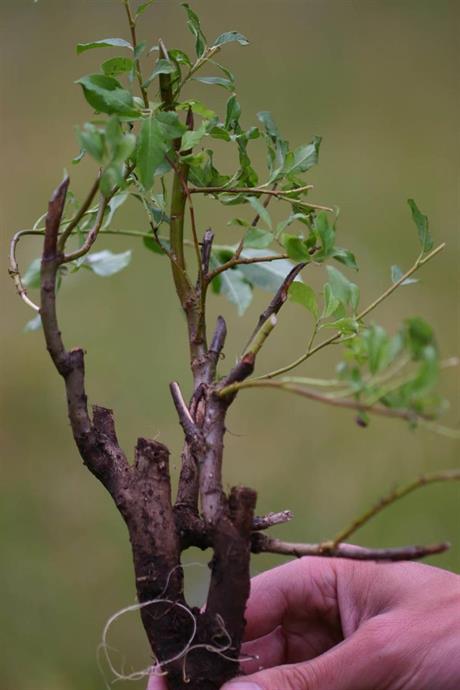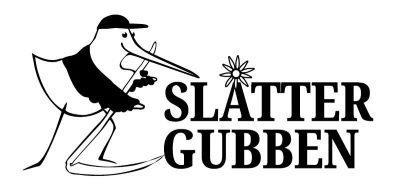Blade hoes & pickaxe
These high-quality Portuguese blade hoes are an excellent tool companion and can be sharpened as sharp as axes.
The small blade hoe is your best partner in the battle against brushes and saplings, from small annual shoots to wrist-thick saplings and stumps left after clearing with a brushcutter. The small blade hoe can handle it all!
The mini blade hoe is best for very thin brushwood and weed removal, as well as lighter work in loose soil.
The standard blade hoe is your friend in marshes when cutting tussocks and clearing brushwood, and it's also an excellent tool for hilling potatoes in the vegetable garden.
The pickaxe will take you through asphalt and really compact, hard, and rocky soil.
Blade hoes are widely used abroad instead of shovels. In Sweden, they have been nearly impossible to find. These high-quality Portuguese blade hoes are excellent tool companions and can be sharpened as sharp as axes. With a fairly blunt edge angle, they can be used with force straight into roots, stumps, etc.
The hoes are available with pre-mounted handles or unassembled.
Using the small blade hoe in a marsh against saplings and stumps
Video how to use the small blade hoe agains lilac shoots
Restoring a meadow that is completly overgrown with the small blade hoe
Pickaxe - mounted shaft
Bring you through hard and rocky ground
Blade hoe broad - mounted shaft
Moves soil and good for heavy weeding
Blade hoe standard - mounted shaft
For garden work and removing tussocks and sapplings in marshes
Blade hoe small - mounted shaft
Perfect for sapplings and brushes! As a vertical sturdy axe.
Blade hoe mini - mounted shaft
For small sapplings and garden work
Blade hoe broad
Moves soil and cut rough weeds
Blade hoe standard + wedge
For garden work and removing tussocks and sapplings in marshes
Blade hoe small + wedge
Perfect for sapplings! As a vertical tough ax.
Shaft to pickaxe 90cm
Round shaft to pickaxe - 90cm
Shaft for blade hoe 110 cm
Handle to blade hoes 110cm
Shaft to blade hoe mini
Shaft and wedge to mini hoe
Wedge to hoe and pickax
Wedge for hoe or pickaxe
How to assemble the shaft on your blade hoe
How we restored an overgrown meadow to save the Top Lady's Mantle
 A willow showing the history of beeng cut with brush cutter one year , then by scythe several years before finally brought up undert the growthpoint by a small blade hoe.
A willow showing the history of beeng cut with brush cutter one year , then by scythe several years before finally brought up undert the growthpoint by a small blade hoe.
In good consultation with our County Administrative Board, we have restored a completely overgrown old pasture to a hay meadow. Completely without a brush cutter!
The result? Well - absolutely uniquely good seen in the light of our previous experiences...... During the years our team have encountered countless "newly cleared" meadows that are "just ready to be mown with a scythe". These have actually been forests with very low canopies. Deciduous trees and undergrowth that have been cut by a brush cutter survive excellently - especially when they are standing open and receiving light, which is the case in a hay meadow. The large root systems of deciduous trees have been charged to supply a tree as large as when it was cut. This means that the annual shoots are enormous. Hopeless to mow with a scythe, and completely impossible to drag a tarp with hay among brush cutter-created stumps. Of course, you can cut the annual shoots with a scythe, but the cut is clean and always a little higher up than the original stump. This means that the following year the cut will be even higher, forming a kind of bush that slowly gains height and is completely in the way of proper mowing close to the ground.
What we did in this area?
Before scything, the undergrowth must be cleared! This is best done in the order that you first enter an area and clear the ground among the larger trees. Remove brush, branches, and small undergrowth with chainsaws and smal blade hoes in the ground. When the ground is clean, smooth, and free of small stumps - only then do you go in and remove the larger trees just as we show in the video above. And preferably, you should not take all the large trees at once but in stages over perhaps a 10-year period. This is to reduce root fertilization. Slowly the meadow plants can now start to establish themselfs under the more and more open ground under the trees.
Succes i overgrown marshes
Larger willow bushes in marshes can be taken with a chainsaw where you allow the chain to go into the ground. First, cut off the branches that are down in the soil from the center like a fan on the bush. Once cut, they can be pulled up from the inside and out or from the outside and in. Then you can saw a number of vertical cuts into the stump itself so that fungi and moisture more easily attack what remains of the tree.
For example, at Norrköping Airport, which we have a video from a little further up, there was a grown forest with willows, birches, and alders on large areas of the limestone marsh. Here it was quite sparse between the trunks, and the trunks that were there were quite large, the competition for light near the ground was great, which meant that it could not be dense between the trunks. When the municipality then wanted it to be more open and some form of mowing, they just cut down all the forest and then ran for many years with a brush cutter and kept all the living stumps. What happened now was that a lot of light came down between the stumps that lived so that thousands of new trees could grow in the quite bare soil that had previously been in shade. When these were then cut with a brush cutter for many years, an extremely dense forest with an extremely low canopy was created - that is, it was mowed with a brush cutter every year 10-20cm above the ground. All the trees that had grown after the first clearing had now grown into quite strong bonsai trees. In the end, the municipality realized that this method did not work - our work team was called in and so we have cleared away this misery now for a few years with blade hoes and chainsaws on the larger ones. If you had initially thought in this process to create a more open limestone marsh of the forest that was there, the work would have been so much easier!














